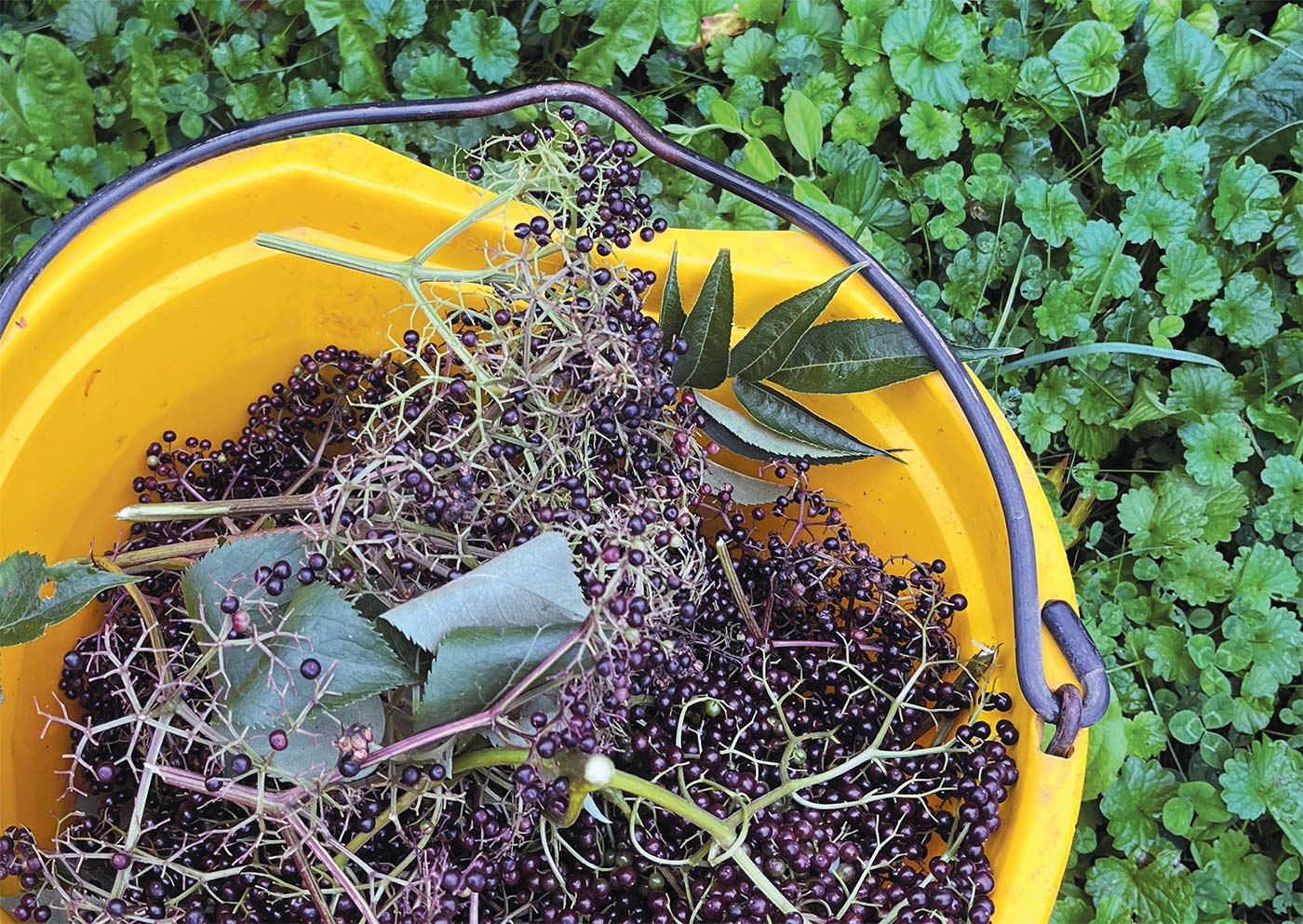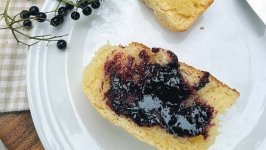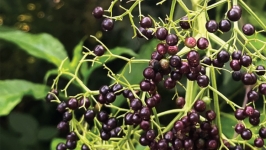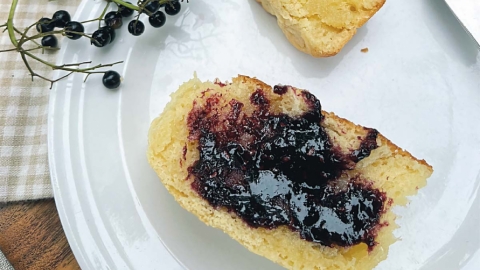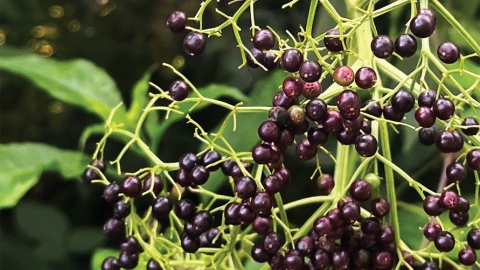Reviving a Sweet Tradition: Elderberries
LAST SEPTEMBER, GENE BARCLAY SAW THE ELDERBERRIES ON HIS PROPERTY DYING. It had been more than 60 years since those berries had fed anyone besides birds. He recalled how, when he was young, a family friend and his dad had picked them and turned them into jam. He wondered in an online community group if anyone might be interested in trying that again, and I answered the call.
My knowledge of elderberries was mostly limited to Monty Python and the Holy Grail, but I’d recently heard that these dark purple berries were good for fending off the flu and had a reputation in folk medicine as an immune-booster, among other health perks. Plus, I love a good kitchen experiment and hate food waste, so I headed to Barclay Farm to see what I could do with this harvest.
When Barclay’s parents purchased the land in lower Bucks County in 1946, it was a working farm, but they were not farmers. His mother was a photographer, and his father was a World War II vet. They were both tired of city life in Philadelphia. One of the best features of the property was a huge, natural spring-fed pool with a sand and gravel bottom, which was always a hit at parties. It was at one of those parties that Barclay first remembers a family friend and veterinarian identifying the elderberry bushes that grew on the property and discussing the medicinal properties of the berries.
Today, that pool is gone, much of the land has been donated to the local heritage conservancy, and the farm revolves around boarding horses and giving lessons. But the elderberry bushes are still there. They’re tall enough that a ladder would be useful, and the berries grow in small bunches, like miniature grapes.
They are the smallest berries I’ve ever seen, the size of small pearls. For efficiency, it’s best to clip the entire bunch and carry them off in a bucket to pick off the stems later. I discovered that the best way to do that is to use the back of a fork, often after freezing the berries, though ripe ones should pop off pretty easily. And you definitely want ripe elderberries only—picking out the green ones is not worth the effort.

Even ripe, elderberries are not good raw. In fact, they can cause nausea and diarrhea. To reap their benefits (and their very name suggests that these berries are believed to lead to a long life), you have to cook them. Elderberry syrup and wine are common, and even the flowers of the plant are edible; Meghan Markle’s wedding cake was lemon elderflower.
But I was here to make jam. It’s pretty simple. Once you have a bowl of clean berries, all you have to do is add sugar (to taste; I started with one cup of sugar for every pound of berries but scaled it back by a quarter cup for a more tart jam). I let it sit overnight to develop juices before putting it in a stockpot over medium-high heat until the sugar dissolved. After bringing it to a boil, I reduced the heat to a simmer for 10 minutes, then added one sliced lemon and a pinch of salt and simmered for five more minutes.
I ran my jam through a food mill on the smallest opening to strain out the seeds (a few are OK), then returned it to the pot, added one tablespoon of fresh lemon juice, and simmered for three more minutes, or until it reached the right thickness. Without a thickener like pectin, the jam will be runnier than most and doesn’t have fruit pieces, but according to Barclay, that’s how it’s supposed to be.
You can do a lot with elderberry jam, from mocktails or cocktails to baked goods, but Barclay remembers eating it on toast with a little bit of melted butter, alongside bacon and eggs. “The sweet-tart combo contrasts with the bacon and eggs,” he says. I brought him a few jars and asked him how close I’d gotten to the taste of his childhood memory. “It’s pretty darn close,” he says.
Elderberries are an ancient plant thought to be native to Pennsylvania. If you don’t know anyone with bushes, you can find them growing wild and forage the berries. You can also grow them yourself. The berries are in season from August through September.


